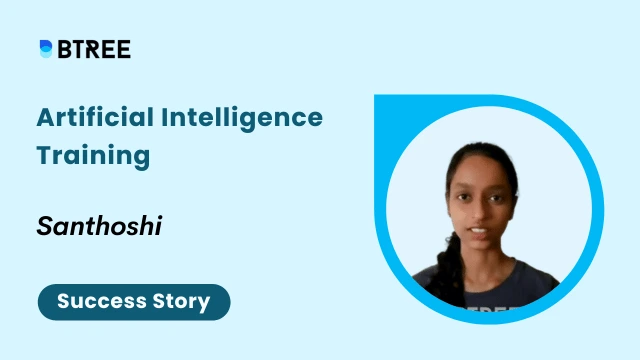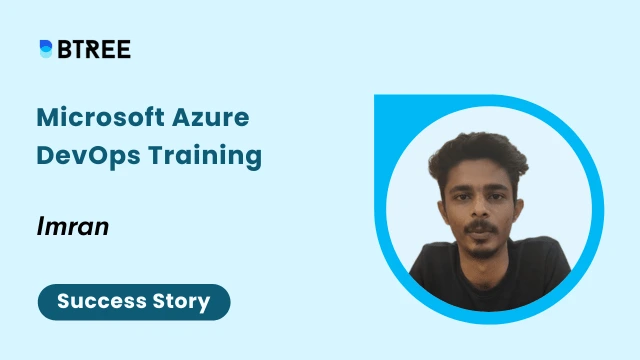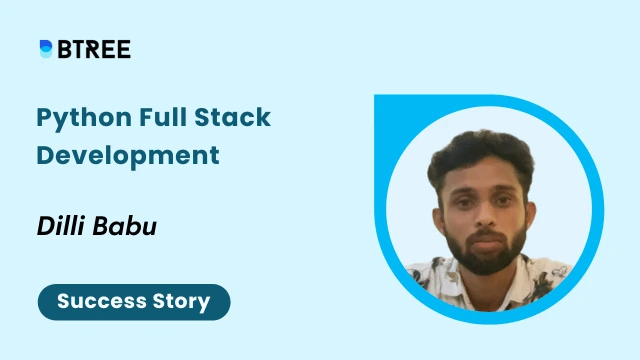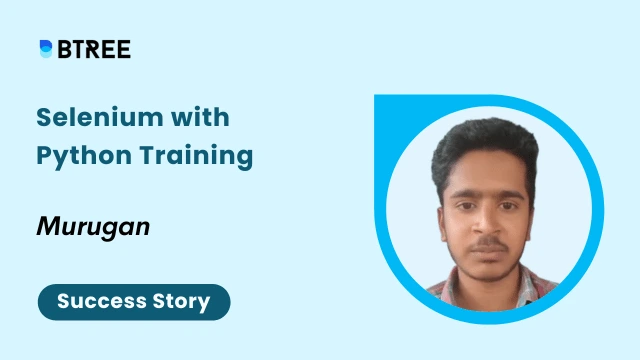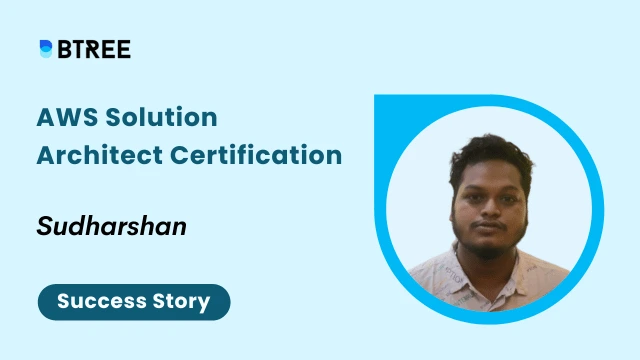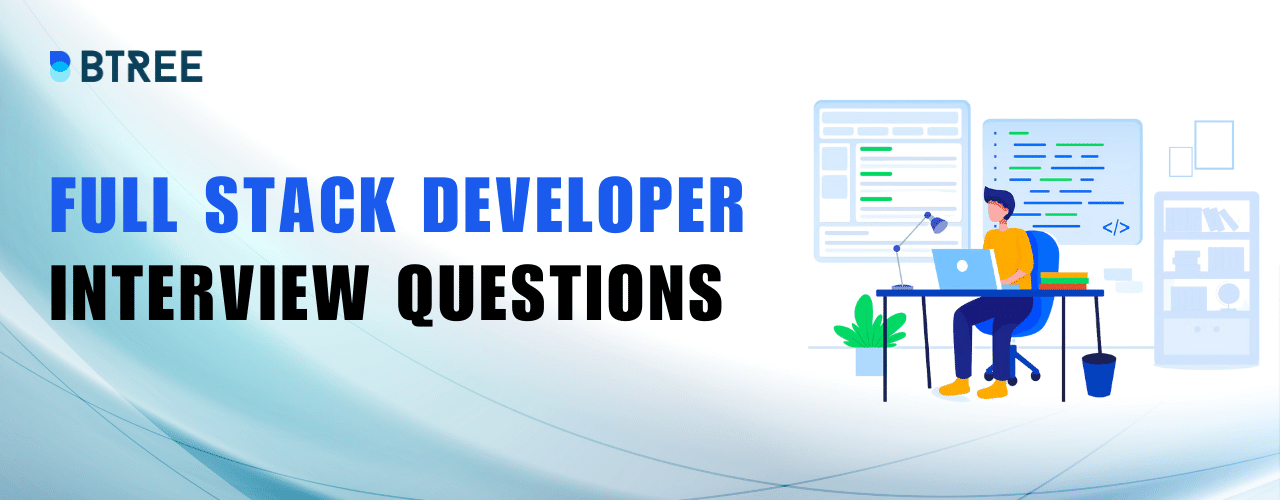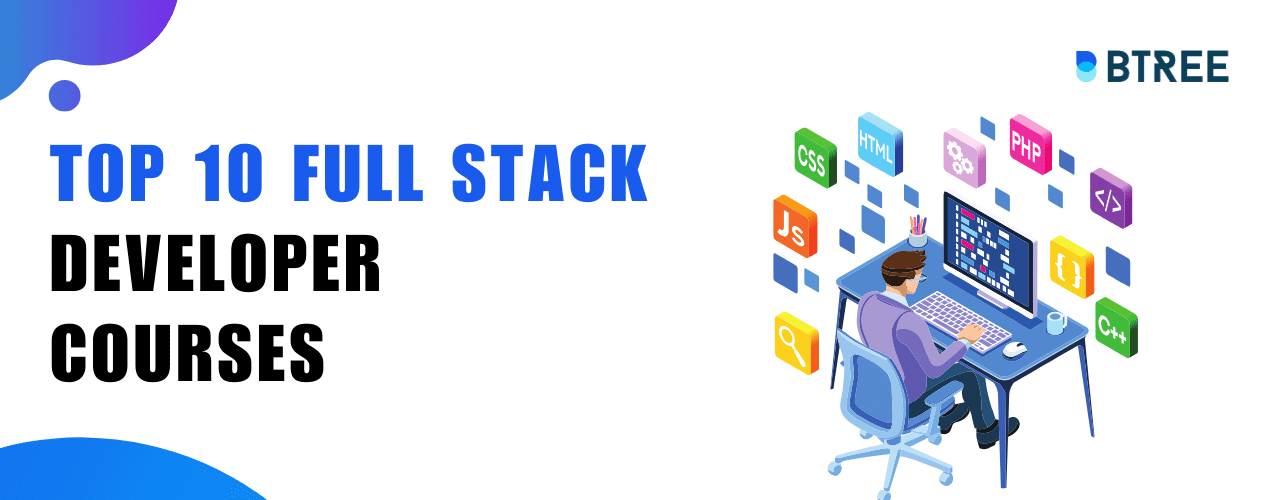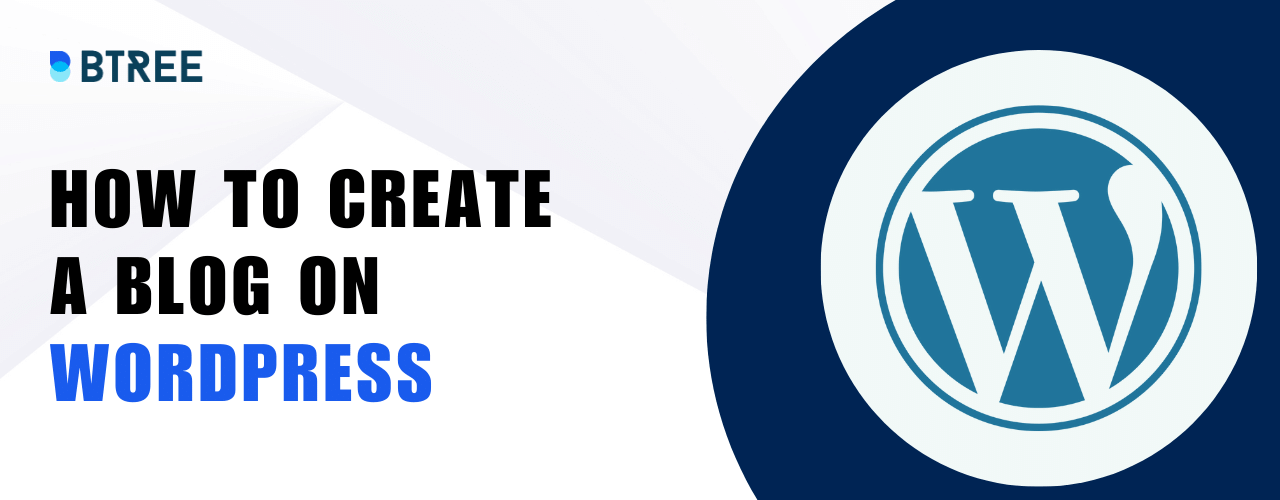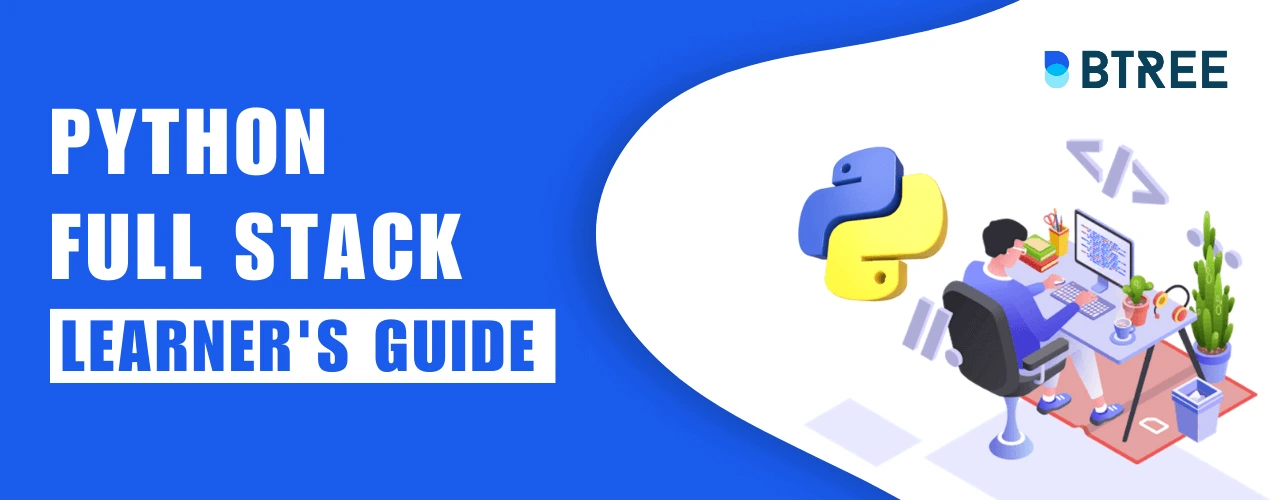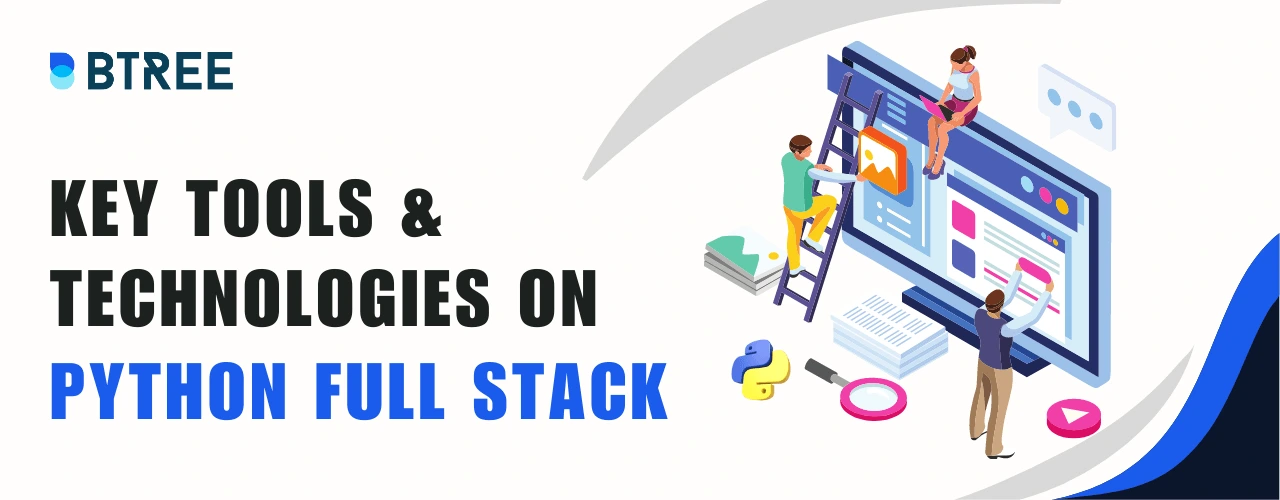
- Tools & Technologies on Python Full Stack Development
- Front-End Development Tools and Technologies
- Back-End Development Tools and Technologies
- Full Stack Development Frameworks
- DevOps Tools for Full Stack Development
- Database Management Systems for Full Stack Development
- Best Security Practices for Full Stack Development
- Conclusion
- FAQs
Tools and Technologies on Python Full Stack Development
Full stack development has become an essential talent in the dynamic world of web development. This blog gives a radical review of the key tools and technologies on Python full stack development frameworks, DevOps tools, database management systems and best security practices.
At the end you may have all of the information you want to create reliable and dynamic web applications, whether or not you are a newbie or an experienced developer trying to sharpen your abilities. Supercharge your career in web development with Btree's Python Full Stack Development course in Chennai! Discover one of the finest training centers in Chennai that offers top-notch training.
Front-End Development Tools and Technologies
Front-End Development is crucial in crafting visually appealing and person-friendly websites and applications. To excel in this field, it's vital to acquaint yourself with the key tools and technologies:
1. HTML (Hypertext Markup Language):
HTML serves as the spine of any webpage, imparting the shape and employer. It uses tags to define headings, paragraphs, snap shots, and hyperlinks. Using HTML, you can ensure your webpage's proper layout and readability.
2. CSS (Cascading Style Sheets)
CSS works effortlessly with HTML to beautify a website's visual presentation. It lets you outline patterns, colors, layouts, and standard aesthetic enchantment. CSS allows the customization of fonts, the introduction of responsive designs for unique screen sizes, and the addition of animations or transitions to make your website visually engaging and professional.
3. JavaScript
JavaScript is a pretty flexible and dynamic programming language that adds interactivity and efficiency to your web page. It lets you create interactive elements, validate forms, handle user events, and perform various actions based on user input. JavaScript is instrumental in making your website responsive, interactive, and dynamic, improving the overall user experience.
You'll have a rock solid foundational base in front-end development if you master HTML, CSS, and JavaScript. These three technologies seamlessly blend, allowing you to build visually appealing, responsive, and interactive websites and applications that spontaneously leave an enduring effect on your users.
Remember, regular practice is extremely vital when it comes to front-end development. So, roll up your sleeves, experiment with coding, and witness your web development skills flourish!
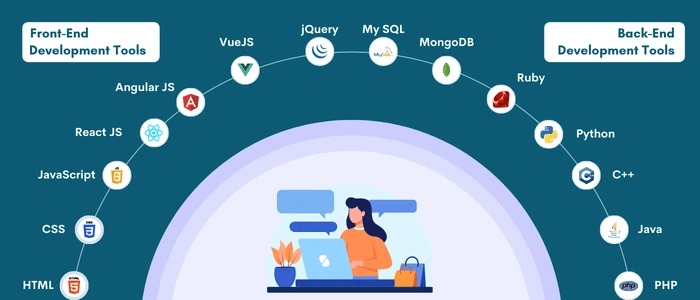
Back-End Development Tools and Technologies
1. Python
Python is a pretty dynamic programming language that serves as the foundation for Full Stack Development. It provides several libraries and frameworks that streamline back-end development, making it a hot choice among developers.
2. Flask
Flask is a sturdy, light-weight and flexible web framework for Python. It is good for developing small to medium-sized applications. Flask offers a simple and intuitive interface, which allows developers to create web applications fast. It offers functions which include routing, request dealing with, and template rendering, making it an exceptional choice for novices or for the tasks with less complexity.
3. Django
Django is a robust and absolutely-featured web framework for Python. It offers a whole set of tools and functions for constructing larger-scale packages. Django follows the Model-View-Controller (MVC) architectural sample, which separates the utility's good judgment into three additives: the model, the view, and the controller. Django consists of an Object-Relational Mapping (ORM) machine, authentication, and an administration interface, making it a powerful framework for complicated initiatives.
To dive deeper into Python Back-End Development using Flask and Django, there are reputable tutorials and courses available online. To assist learners understand the process of creating web apps, online resources provide comprehensive instructions and real-world examples. It is crucial to pick reliable tutorials or courses that are relevant and offer detailed covering of the topics. Look for resources that have positive reviews and recommendations from other developers. Additionally, consider resources that offer practical examples and real-world projects to apply the concepts learned.
Other Tools And Technologies For Back-End Development In Python
SQLAlchemy, WTForms, and Celery are some other tools and technologies that are useful for back-end development in Python. They include:
- SQLAlchemy is a popular database abstraction layer for Python. It makes it easy to interact with databases, regardless of the underlying database engine.
- WTForms is a popular form validation library for Python. It makes it easy to validate user input and ensure that forms are submitted correctly.
- Celery is a distributed task queue for Python. It is perfect to decouple tasks from the web application, which not only improves performance but scalability as well.
These are just a handful tools and technologies that one can leverage for back-end development in Python. Python is the core language used in Full Stack Development, and Flask and Django are popular frameworks for Back-End Development. Flask is lightweight and flexible, suitable for smaller projects, while Django is robust and feature-rich, ideal for larger-scale applications.
Full Stack Development Frameworks
Full Stack Development frameworks simplify the process of building web applications by providing tools and libraries that enhance efficiency. Angular and React are two popular frameworks used in full stack development.
1. Angular
Angular is a framework that allows developers to develop complicated web applications very easily. It combines HTML, JavaScript and CSS to build flexible and interactive interfaces for users. Following a component-based architecture, Angular divides the application into reusable and independent components. Each component represents a specific part of the user interface, simplifying code management.
Key to Angular is its powerful data binding capabilities. It offers two-way data binding, ensuring changes in the user interface are automatically reflected in the underlying data model and vice versa. This simplifies keeping the user interface and data in sync, reducing manual code.
Angular also provides features for handling user input and events. It offers a declarative approach to managing user interactions, simplifying event handling. Built-in form validation and error handling mechanisms contribute to creating robust and user-friendly forms.
2. React
React is a JavaScript library known for its component-based design and effective rendering. It is widely used for building interactive user interfaces. React follows a "learn once, write anywhere" approach, enabling developers to build user interfaces for various platforms, including web, mobile, and desktop applications.
React is the concept of components, which represent reusable parts of the UI. Components are combined to construct the complete application interface. React utilizes a virtual DOM (Document Object Model), an efficient representation of the actual DOM, which enables React to update only the necessary parts of the user interface when the underlying data changes. This enhances performance and responsiveness.
Both Angular and React have active communities and comprehensive documentation, providing valuable resources and support to developers. Moreover, they offer several third-party libraries, features and extensions.
DevOps Tools for Full Stack Development
DevOps mixes development and operations, aiming to streamline the software delivery process. It emphasizes collaboration, automation, and efficiency so that it will supply the best quality software at a faster speed. In full stack development, both front-end and back-end components need to be seamlessly combined and DevOps tools play a crucial role in guaranteeing smooth deployment and operation of applications.
Two essential DevOps tools for Python Full Stack Development are Docker and Kubernetes.
1. Docker
Docker is a containerization platform that revolutionized the software development and deployment panorama. It lets developers contain applications and their dependencies into portable boxes (containers). A self-contained unit that contains all the essential frameworks, libraries, and components to run an application is known as a "container." With Docker, developers can develop light-weight and consistent environments, ensuring that the application runs the same manner across distinct platforms and deployment environments.
- One of the key blessings of Docker is its capacity to offer isolation and reproducibility.
- By capturing the software and its dependencies within a container, Docker removes compatibility problems and dependency conflicts.
- Developers can easily create, share, and deploy containers, reducing the time and effort required for putting in place development environments.
- Moreover, Docker simplifies the manner of deploying packages, as containers can be moved without problems from one environment to every other without worrying about the underlying infrastructure.
2. Kubernetes
Kubernetes, often called "K8s," is an open-source container orchestration system that complements Docker's containerization capabilities. It helps automate deployment, scaling, and control of containers in a manufacturing environment, providing a scalable and resilient infrastructure for running containerized applications.
- Kubernetes organizes containers into logical units called "pods".
- Pods are the primary deployment units and can be easily scaled based on resource requirements.
- Kubernetes enables load balancing across multiple pods for efficient resource usage and high application availability.
- It provides self-recovery capabilities by automatically restarting failed containers and maintaining the desired application state.
Besides Docker and Kubernetes, there are a number of different DevOps tools and practices that are usually used in full stack development. Continuous Integration/Continuous Delivery (CI/CD) tools like Travis CI, GitLab CI and Jenkins. These tools automate the build, testing, and deployment methods. Configuration management equipment like Ansible and Puppet assist in managing and maintaining the infrastructure and application configurations. Monitoring and logging tools such as Prometheus and ELK Stack enable developers to gain insights into the application's performance and troubleshoot problems effectively.
Database Management Systems for Full Stack Development
1. MySQL:
MySQL is one of the most extensively used open-source relational database management systems. It is popular for its sturdiness, scalability and speed. MySQL provides features such as high-quality performance, data security, ACID compliance, and a large community for support. MYSQL is used for several types of applications, from small-scale projects to large-enterprise projects.
2. PostgreSQL:
PostgreSQL is another effective open-search relational database management system. It offers advanced functions which includes support for complicated queries, complete-textual content seek, geospatial facts processing, and extensibility. PostgreSQL is renowned for its reliability, integrity, and support for various programming languages. It is extensively used for applications that require advanced capabilities to manipulate and analyze data.
3. MongoDB:
MongoDB is a popular NoSQL database control system that uses a flexible file-oriented records version. It lets in for storing and retrieving statistics in JSON-like documents, offering scalability and flexibility. MongoDB is a great choice when working with data that is unstructured or semi-structured. It is also commonly used in applications that require high overall performance and horizontal scaling.
4. Redis:
Redis is a type of storage system that keeps data in memory. It can be used as a database, cache, or message broker. It is known for its speed and versatility in managing diverse data types, including strings, lists, sets, and hashes. Redis provides features like data persistence, high availability, and pub/sub messaging, making it useful for real-time applications, caching, and session management.
Selecting the right Database Management System (DBMS) is crucial for efficient data storage and retrieval in full stack development. MySQL, PostgreSQL, MongoDB, and Redis offer various strengths and are widely utilized in different application scenarios.
Best Security Practices for Full Stack Development
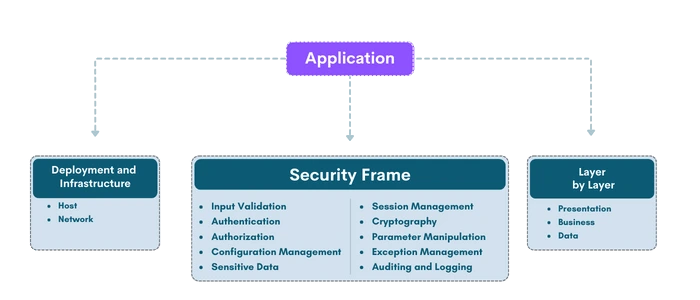
Security is a vital concern in full stack development, as applications frequently handle sensitive user data and must defend against a wide range of threats. To ensure robust security, it is vital to employ a combination of reliable tools and best practices.
Here are some essential security tools and best practices to consider in full stack development:
1. Secure Authentication and Authorization: Implement secure authentication mechanisms, such as OAuth or multi-factor authentication, to protect user accounts. Follow the principle of least privilege by granting users only necessary permissions and implement proper authorization controls.
2. Regular Updates and Patching: Keep your software dependencies, frameworks, and libraries up to date with the latest security patches. Regularly update and patch your server operating system, web server, and other software components to mitigate known vulnerabilities.
3. Input Validation: To protect your data against common security risks like SQL injection, cross-site scripting (XSS), and cross-site request forgery (CSRF), it is important to validate and sanitize user inputs thoroughly. Implement server-side validation and utilize frameworks or libraries that provide built-in input sanitization mechanisms.
4. Secure Communication: Use secure protocols like HTTPS for transmitting data over the network. Encrypt sensitive data at rest and in transit to ensure confidentiality. Implement secure session management practices and protect against session hijacking or fixation attacks.
5. Secure Configuration: Ensure your server and application configurations follow security best practices. Restrict unnecessary access to system resources, disable unnecessary services, and configure proper file permissions. Use strong and unique passwords and consider implementing automated tools for configuration management.
6. Security Testing: Conduct regular security assessments, including security code reviews, vulnerability scans, and penetration tests. Engage security professionals or specialized firms to perform comprehensive security assessments. Regularly test and monitor your application for potential vulnerabilities.
7. User Data Protection: Implement secure storage and handling of user data. Hash and salt passwords before storing them in databases. Encrypt sensitive data using appropriate encryption algorithms and secure key management practices.
Remember that security is an ongoing process which demands attention. It is essential to stay updated with the latest security trends, vulnerabilities, and best practices in order to efficiently protect your applications and user data.
Conclusion
Well done, You now have a good understanding of the crucial tools and technologies used in Python Full Stack Development. You are set to create dynamic web applications from beginning to end. But why stop here? Take the next big step by enrolling in our Python Full Stack Development course in Chennai, it provides extensive training, hands-on practice with live projects, valuable insights from experts and placement support. Don't miss out on this chance to supercharge your Full Stack Development skills.
FAQ's
1. Why is Python popular in Full Stack Development?
Python is popular in Full Stack Development because of its simplicity and extensive libraries and frameworks, and its tremendous capacity to handle both the front-end and back-end tasks smoothly.
2. What are some popular front-end frameworks in Full Stack Development?
Some popular front-end frameworks in Full Stack Development are React, Angular, and Vue.Js. These frameworks offer tools and libraries to simplify the front-end development and enhance user experience.
3. Which databases are commonly used in Full Stack Development?
Commonly used databases in Full Stack Development include MySQL, PostgreSQL, MongoDB, and Redis. These databases provide numerous capabilities, scalability, and flexibility to address data storage and retrieval efficiently in web applications.
4. How can I ensure the security of my Full Stack Development applications?
To ensure security in Full Stack Development, it is important to implement secure authentication, regularly update software components, validate and sanitize user inputs, use secure communication protocols, follow secure configuration practices, conduct security testing, and protect user data through encryption and secure storage practices.
Our Lovely Student feedback
Course Schedule
| Name | Date | Details |
|---|---|---|
| Angular Training |
19 Aug 2023
(Sat-Sun) Weekend Batch |
View Details |
| Python Full Stack Developer Course |
26 Aug 2023
(Sat-Sun) Weekend Batch |
View Details |
| Java Full Stack Developer Course |
02 Sept 2023
(Sat-Sun) Weekend Batch |
View Details |
Looking For 100% Salary Hike?
Speak to our course Advisor Now !
